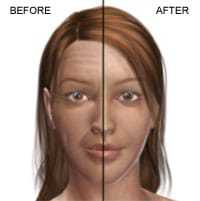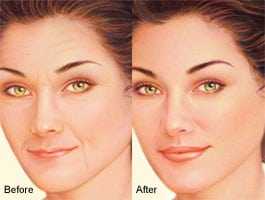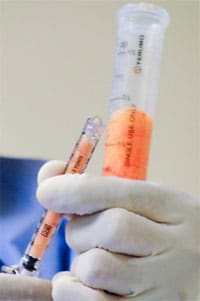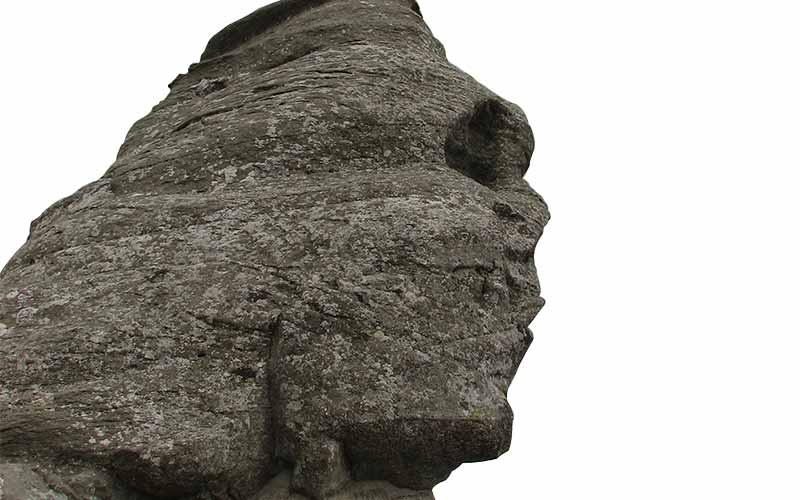Facial Fat Transfer
Nobody said that aging will be kind to your face. Indeed, nothing can display aging more than a gaunt appearance in the cheeks. This can be ruthless even in former supermodels with enviable bone structure. Though the great cheekbones and jawline remain, the soft, fatty cushion of youth seems to melt away leaving a severe, masculine look to a now elongated, rectangular face. Fat transfer is an excellent solution to reverse this visual conundrum. By carefully and methodically placing the fat in multiple layers in that space between the cheekbone and jawline including the nasolabial fold (that stubborn line that runs from the nose to the corner of the mouth), profound rejuvenation can be obtained. The results are not only permanent but natural and after a year or so, even skin blemishes and pigment irregularities have been corrected.
Procedure Notes for Fat Transfer
Autologous Fat Transfer, Fat graft, Fat Injections
THE GOAL: To smooth (by filling wrinkles) or contour (by increasing volume ) in tissues where fat has shifted or diminished, thereby restoring a healthy, youthful look. A youthful face is accentuated by convexities and an aging one by concavities.
With injectable fillers, we have a number of different choices for ‘lifting’ wrinkles and adding volume. Areas for augmentation include lips, face, hands and elsewhere on the body as well as scar revision. Fillers fall into two categories; permanent and temporary.
Permanent Fillers:
Fat transfer – Injecting the patient’s own fat which has been harvested via low-pressure liposuction. Because the fat is the patient’s own tissue, there is no absolutely no tissue reaction and, more often than not, it is more economical in the long run. In addition to the fill, fat has the added benefit of providing an improved skin appearance because of the rich source of stem cells it contains.
 For any given procedure, anything from 20% to 80% of the fat augmentation will ‘take’ and become permanent. Occasionally, repeated fat injections from 6 to 12 months apart may be required deliver optimal results over time. Autologous fat (taken from your own body) is currently my preferred substance to permanently add volume to the face and body. It is soft, natural and absolutely safe. However, fat transfer involves a short procedure as opposed to a simple injection and there is associated swelling for a number of weeks postoperatively. This is the price of permanency.
For any given procedure, anything from 20% to 80% of the fat augmentation will ‘take’ and become permanent. Occasionally, repeated fat injections from 6 to 12 months apart may be required deliver optimal results over time. Autologous fat (taken from your own body) is currently my preferred substance to permanently add volume to the face and body. It is soft, natural and absolutely safe. However, fat transfer involves a short procedure as opposed to a simple injection and there is associated swelling for a number of weeks postoperatively. This is the price of permanency.
ArteFill – Unlike its earlier predecessor Artecoll, is a synthetic permanent filler that produces extremely natural and soft results. Dr Haworth has had over three years of unsurpassed experience with this injectable without any untoward results. This may be an attractive alternative for those wishing to achieve facial volume augmentation but cannot afford the initial time and expense involved with fat transfer. Fat will ultimately prove to be the most economically viable option in the long run as well as provide subtle adjuvant benefits such as improvement in both skin texture and appearance.
Polyacrylamide gels (PAG) – Such as Bio-Alcamid® and Aquamid® represent the latest in permanent filler technology and, despite the fact that they are available in Europe and beyond, are not yet FDA-approved for US usage. PAG’s possess distinct advantages over other currently available fillers. They not only produce very natural results, but are permanent, safe and removable.
Polyvinyl alcohol based gels (Bioinblue®) – Provide another alternative for lip voluming. These are long-lasting and, again, produce natural results. However, they are not yet available in the US and their safety has not yet been proven.
Temporary Fillers
Among the temporary fillers are a bewildering array of highly marketed fillers on the market, mainly of the Hylauronic acid variety:
Collagen-based products (Zyplast™, Zyderm™, Cosmoplast™, Isolagen™, etc.) – Last anywhere from 6 weeks to 3 months. They produce nice results, but they have been essentially supplanted by the Hyaluronic acid derivatives (HAD), which are sugars naturally found in the body. This is because HAD’s last longer.
Hyaluronic acid derivatives (HAD) last anywhere between 3-24 months. Initially, they were more painful to inject than collagen, but new products, such as Juvederm XC™ and Voluma™ help tackle that problem since they represent the new breed of fillers to come premixed with Lidocaine, a numbing agent. Other HAD’s available in the US which come premixed with a numbing agent include Restylane™, Captique™ and Hyalform®. Belotero® produces natural results especially around the eye area since it minimizes the Tyndall effect. This is an annoying complication whereby the substance swells up due to its water retention capacity which, in turn, imparts a swollen, puffy look around the eyes along with a bluish tinge. One of the advantages of HAD is that it is easily reversible with an enzyme called hyaluronidase (Wydase).
EXPECTATIONS
Of course, individual results can vary, but fat augmentation will deliver a smooth, fresh, rejuvenated look that can last to your grave. Unlike other fillers however that eventually wear away completely, a certain percentage of fat will vascularise and become permanent. It is a living graft and contrary to popular myth will not go away if properly performed. How much stays depends on the individual patient and sites, but anywhere between 20-90% will live indefinitely.
Occasionally a second fat transfer is warranted to attain desired goals, especially in the lips. But, as time goes by and skin sags with loss of volume and elasticity, augmented lines and indentations may reappear and new ones may manifest. In addition to enhancing youthful convexities and improving skin tone, fat transfer to correct concavities of the temples, forehead, mid-cheeks, upper eyes (to minimize a deep-set eye), lower eyelid “tear troughs”, nasolabial folds.
Fat can be used to diminish the jowls (by placing it in front of and behind them), enhance the chin, cheeks, lips and brows as well as correct nasal irregularities.
Candidates for Fat Transfer

Injectable filler or fat can help improve the skin’s texture by filling in the laugh lines and facial creases that often occur with aging.
The most appropriate candidates for injected fat grafts:
- Are in good health
- Do not smoke
- Have realistic expectations of what fat grafting can and cannot achieve. For example, it will not substitute for a facelift, but will produce beautiful and natural softening of the face and its associated age-related folds.
- Have the time available for healing and resolution of bruising (usually 10-21 days).
What fat transfers cannot do is:
- Smooth skin that is excessively slack or loose
- Tighten skin
- Remove age spots
- Eradicate fine lines often stemming from sundamage and age
Related procedures:
Since fat injections require liposuction as a preparatory step, many patients choose to have them done at the same time as liposuction surgery.
Other Areas Of Fat Transfer
- Forehead and Temples – Specifically, with age, the forehead tends to flatten, losing the youthful convexity of youth. Concavity ensues resulting in a more pronounced ridge along the eyebrows. Additionally, the temples become hollow imparting an aged, bony appearance to the upper third of the face. Unfortunately, women seem to suffer from this pattern of aging more significantly then men. Fortunately, fat transfer is an excellent solution to restore lost volume in these regions. Not only does a patient look naturally refreshed but aesthetic focus is directed back towards the eyes while the face appears more diamond shaped and shorter.
- Upper and Lower Eyelid Regions – These too, like the temples, lose vital fat leading to more progressive deepening of the eyes, dark circles and the appearance that the eyes are closer together than where they were in the 20’s. Using extremely advanced techniques, Dr. Haworth restores fat to the upper eyelid to make the eyes more “open”, wider spaced and almond shaped. For the lower eyelid, he carefully transfers fat to the “tear troughs” or lower eyelid hollows to reduce the appearance of dark circles and in turn, create a smooth transition from the lower eyelid into the cheek itself. When combined with an endoscopic mid facelift to elevate the cheek back to the lower lid, results are nothing short of spectacular.
- Lips – Dr. Haworth’s rule of thumb is to always ensure a beautiful shape of the lips before adding volume, whether by temporary filler or permanent fat. This is one area where over correction is important to ensure a meaningful aesthetic result. With fat transfer alone to the lips, subtle shape changes such as an elevated corner or highlighted vermillion border or ‘white roll’ can be attained. It is important to have a deep appreciation of aesthetic proportion of the lips as it pertains to the size and shape of the upper vis-à-vis the lower. Unlike the breasts, body, eyes or face, the upper lip should not be a replica of the lower nor vice versa.
Fat can be successfully transferred into the vermillion border, upper and lower lip and also into the subtle irregularities that surround the pink lips themselves such as marionette folds, creases and the vertical wrinkles known as “smokers lines”. As with all plastic surgical procedures, it is imperative to have realistic expectations as to what fat transfer can achieve and what it cannot. During your consultation, ask questions-your plastic surgeon should give you the skinny in regards to fat.
- Better Bone Structure – A significant number of patients come to me each month requesting facial beautification. When faced with such a request my first step is to ascertain the quality of their underlying skull, specifically the strength and shape of their cheekbones, chin and jawline. Most patients think that artificial facial implants is their only option but fat transfer can be an amazing substitute for these implants. Not only is fat transfer natural but when implanted onto or near bone, it will feel just like that-bone! Though not always as dramatic as a surgically placed implant, fat transfer provides remarkable results, nonetheless. Dr. Haworth has created countless beautiful faces with striking cheekbones, refined noses augmented chins and defined jaw lines, all with fat alone!
- Breast, Buttock and Hand – Fat transfer can also be an ideal solution for those patients requesting minor enhancement of their breasts but not necessarily wanting to go to the trouble of undergoing formal breast augmentation with an implant. Again, results are natural but expectations must be managed. In general, fat transfer can provide an increase in one cup size only and sometimes less. In regards to buttock augmentation or a “Brazilian butt lift”, Dr. Haworth feels that fat transfer is the safest, best option for these patients and significant results can be obtained with this technique. Of course, enough fat must be available to transfer in the first place. Skinny girls wanting big breasts or buttocks will be disappointed to know that fat transfer is an unrealistic option for them.However, if the patient has plenty of fat stores elsewhere in the body, they will also be very pleased to know that not only will they benefit from the fuller breasts and/or buttocks but also get enhanced by liposuction performed to harvest the fat from other parts of the body.
With age, the skin of the back of the hands becomes dramatically thinner which eventually results in more visible veins and tendons or a “skeletonized” look, so to speak. Fat transfer can be performed into the back of the hands with some degree of success. Fat transfer can be also complemented with fractionated laser treatment to treat the brown spots associated with advancing years. Ask your surgeon further if this procedure is right for you.
Superior Technique
Fat augmentation has become significantly more sophisticated than in generations past, resulting in far more subtle, natural outcomes than ever before.
Dr. Haworth is a fat graft specialist with a signature technique that includes:

- HAND CRAFTED – The final success in a fat transfer (both in terms of longevity and appearance) starts with the initial procurement of the fat. Dr Haworth does this by hand using a very low-pressure syringe to harvest the fat. No regular higher-pressure machines are utilized which can emulsify the delicate fat.
- NO CENTRIFUGE – Many surgeons use a centrifuge to concentrate the fat after it is harvested. Dr. Haworth, however, first decants and then washes the fat with saline. After these steps, he manually separates the collagen fibers from the fat in order to create a homogenous smooth substance that be transferred easily with little friction, and trauma. Dr Haworth believes centrifugation damages the fragile fat leading to less “take”.
- PERFECT PLACEMENT – Proper placement of the incision sites and injected areas is absolutely essential for long lasting, natural looking augmentation. Dr. Haworth understands that fat must be placed directly beneath the skin, within the muscle and along the bone. When fat is placed within fat itself, less successful grafting will occur and therefore less successful results.
- KEENER EYES – Up until recently plastic surgical procedures focused on the major cues of aging such as prominent nasolabial folds, drooping brows, sagging jowls and neck. Hence, facial rejuvenation, albeit successful in a basic sense, remained incomplete because minor age cues were left unaddressed. Minor age cues are those developments that signify an aging face but are often unnoticed since they are subtle and subliminal in nature. Among them are lower eyelid hollows (“tear troughs”), hollowing of the temples and the area in front of the ear and below the cheekbones as well as sagging of the corners of the lips. These minor age cues mainly result from loss of subcutaneous fat, imparting a “drawn-out” appearance. With new micro-techniques and a better appreciation and keener eye, these heretofore stubborn minor age cues can be successfully corrected with fat transfer. Dr Haworth is a foremost expert in this blossoming field.
PRE-OPERATIVE CONSULTATION
The pre-operative consultation is where you meet with Dr. Haworth and our staff to review your health, finalize the details of your procedures, order appropriate tests, prescribe medications, discuss your aftercare and answer any questions you may have.
All patients are required to take standard blood tests within 6 weeks of surgery. This can be arranged at the same time as your pre-op consultation.
To the consultation, we ask that you bring the following:
- Any appropriate health records related to the list of conditions noted above.
- Any radiological test results including regular Xrays and CAT scans that may have been taken.
For patients over 45, we may also require that you provide the following:
- full medical clearance
- EKG
Alternatively, we can coordinate this for you.
CRITICAL PRE-OP CAUTIONARY NOTE
It is absolutely essential that that you avoid all aspirin, aspirin-related, ibuprofen or blood-thinning medications for 2 full weeks prior to your surgery. In your pre-op consultation, we will give you a complete list of these drugs. For our patients, we also provide a password-protected link allowing you to download the list onto your computer. If in doubt about a specific medication, do not take it, call the office first and ask if it is on the forbidden list.
PROCEDURE AND RECOVERY LOGISTICS
SURGERY DURATION: Anywhere from 30-120 minutes, depending on the number and volume of areas to be augmented and what other procedures the patient is having at the same time.
ANESTHESIA: Sedated
As you wake up from surgery, you will be bruised and swollen. Any pain you will feel should be of a minimal degree. Besides, prescription painkillers will easily control any discomfort.
POST-OPERATIVE CARE
You will need to keep your activities to a minimum for a day or two.
In person and in your post-op information packet, we shall explain everything you need to know for your aftercare at home that will include:
- medications (prescription and homeopathic)
- cleaning incision sites
- head elevation
- cooling
To aid your recovery you’ll want to rest as much as possible and:
- Keep your head gently elevated (above your heart-level)- even while sleeping – for at least 10-14 days after surgery.
- Sleep on your back or side.
- Avoid strenuous activity – including exercise, sex and heavy housework – for at least 7-10 days.
- Avoid steam baths, and saunas for at least 6 weeks or until the doctor gives you the OK.
- Avoid alcohol and aspirin products for 14 days before and after the surgery.
During healing, you may experience:
- Swelling at both the donor and injection sites that will last from 2 to 3 weeks
- Overcorrection or exaggerated swelling of the fat-grafted sites – even after the initial swelling subsides. This will generally diminish from 4-12 weeks. However, the worst swelling is gone by the third postoperative day. It is not uncommon for a patient to love their look while they are quite swollen and become slightly disappointed when all the swelling dissipates. Patients that fall into this category tend to be very thin or atrophic in their face to begin with.
- Bruising usually reaches its peak during the 3-4th day, and generally takes about two weeks to a month to completely fade away.
- Numbness which is transient in nature.
- Magnified asymmetry in the first 1-3 weeks after surgery.
Fleetingly rare complications may include:
- Infection
- Hematoma (blood collection below the skin)
- Paralysis
- Blindness
Recovery time:
Aside from some swelling, fat grafts in themselves do not require any pronounced recovery period. Whatever recovery time you need will depend on the extent of your initial liposuction procedure and your individual threshold to appearing in public.
For best results optimum outcome depends on you by:
- Following all post-op instructions to the letter
- Sleeping on your back
- Avoiding all sun exposure on your neck, breasts and decolletage until all bruising has gone
RISKS & CHALLENGES
Conditions that make fat transfer more of a challenge and may require additional consent or consultation include:
- uncontrolled high blood pressure
- blood clotting problems
- smoking
- previous surgery or recent filler injections
- past silicone injections
No surgery is entirely risk-free. However, both our staff and facilities have the highest possible qualifications to produce a happy outcome.
While risks and complications are extremely rare, be aware that those for fat augmentation can include:
- Subtle asymmetry or irregularities (though this usually resolves by itself once the post-operative swelling has subsided)
- Incomplete correction of concavities
- Incomplete augmentation of structures (such as lips and cheeks)
- Localized “bumps”
- Prolonged areas of darker skin discoloration (especially under the lower eyelids in olive skinned persons)
- Nerve damage (exceedingly rare)
- Irregularities of the fat donor sites (from where the fat was originally harvested)



